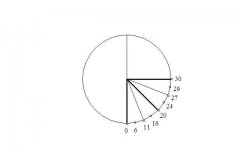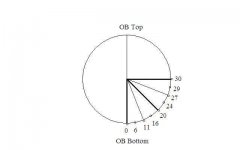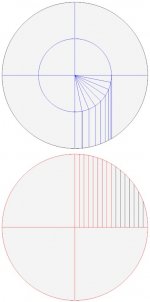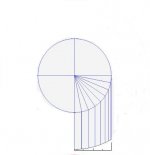Patrick, I don't understand the angle numbers you came up with. Here's the same diagram with the angles that I came up with for each point. It's not perfect but probably within a degree using the aiming table.

Here are the resulting shots using all 9 of these aims from 3 diamonds away from a "pocket." The compression of aiming points towards the edge using the circumference divisions offsets the equator division angles perhaps too much.
Page 2 represents the 1/8 circumference divisions only.

Here are the resulting shots using all 9 of these aims from 3 diamonds away from a "pocket." The compression of aiming points towards the edge using the circumference divisions offsets the equator division angles perhaps too much.
Page 2 represents the 1/8 circumference divisions only.



